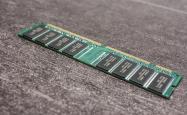Windows 8 Enterprise Edition: The Ultimate Operating System for Business
In the ever-evolving landscape of personal computing, Microsoft's Windows operating system has been a staple since its inception in the late 1980s. With each new iteration, Microsoft has sought to enhance user experience and introduce innovative features that cater to both individual consumers and enterprise environments. Among these iterations, Windows 8 stands out as a significant departure from its predecessors due to its emphasis on touch-based interfaces and the introduction of the Start Screen.
At the heart of Windows 8 is the Metro interface, which provides a fresh look and feel compared to the traditional desktop environment found in previous versions of Windows. The Start Screen serves as the central hub for all applications and settings, with live tiles displaying information such as weather updates, news feeds, and calendar events. This modern approach to navigation caters to users who are accustomed to using tablets and smartphones, offering a seamless transition between devices.
One of the most talked-about features in Windows 8 is the ability to run multiple desktop environments simultaneously. Known as "snap," this feature allows users to have two windows side by side, which can be particularly useful for multitasking. Users can quickly resize the windows or arrange them to their preferred layout, making it easier to work across different applications at once.
For businesses, Windows 8 Enterprise Edition offers several advanced features designed to meet the specific needs of corporate environments. These include:
1、AppLocker: A security feature that controls which applications can be installed and run on a device. This helps prevent unauthorized software installation and reduces the risk of malware infections.

2、BranchCache: A technology that improves network performance by caching content closer to end-users. This reduces bandwidth usage and speeds up file transfers within a company's intranet.
3、Remote Desktop Services (RDS): Allows IT professionals to manage remote computers, deploy software, and provide technical support without being physically present on the device.
4、BitLocker: An encryption tool that protects data stored on drives against unauthorized access. It is especially useful for laptops and other mobile devices used outside of the office.
5、Virtualization: Support for Hyper-V virtualization enables businesses to create virtual machines within the Windows platform, providing flexibility and scalability for testing and development environments.
6、Group Policy Management Console (GPMC): A comprehensive tool for managing group policy objects (GP), GPMC allows administrators to control various aspects of Windows configuration on an organizational level.
7、DirectAccess: A feature that simplifies the deployment of VPN connections for branch office workers who need secure access to enterprise resources over the Internet.
8、Windows To Go: A portable version of Windows 8 that can be written to a USB drive. This allows users to boot into a full Windows OS from any USB drive, making it easy to use Windows on a variety of devices.
Despite its innovative features, Windows 8 faced mixed reception upon its release. Critics raised concerns about the loss of the Start Menu, the learning curve associated with the new interface, and potential disruptions to productivity. However, many businesses recognized the benefits of Windows 8 and began to adopt it for their enterprise systems.
As time has passed, the initial controversy has subsided, and Windows 8 has become more accepted within the business community. Its robust set of features and capabilities make it a solid choice for organizations looking to stay competitive in today's fast-paced digital world. Whether you're a small business owner managing a fleet of PCs or a large corporation requiring scalable solutions, Windows 8 Enterprise Edition offers a suite of tools tailored to meet your organization's unique requirements.
In conclusion, Windows 8 Enterprise Edition represents a significant step forward for Microsoft's Windows operating system in the enterprise space. While it may not be the perfect fit for every business, its combination of advanced features and user-friendly design makes it a compelling option for those looking to adopt a modern, touch-enabled operating system. As businesses continue to evolve and embrace new technologies, Windows 8 remains a key player in the enterprise software market, ready to adapt to the changing needs of the business world.








